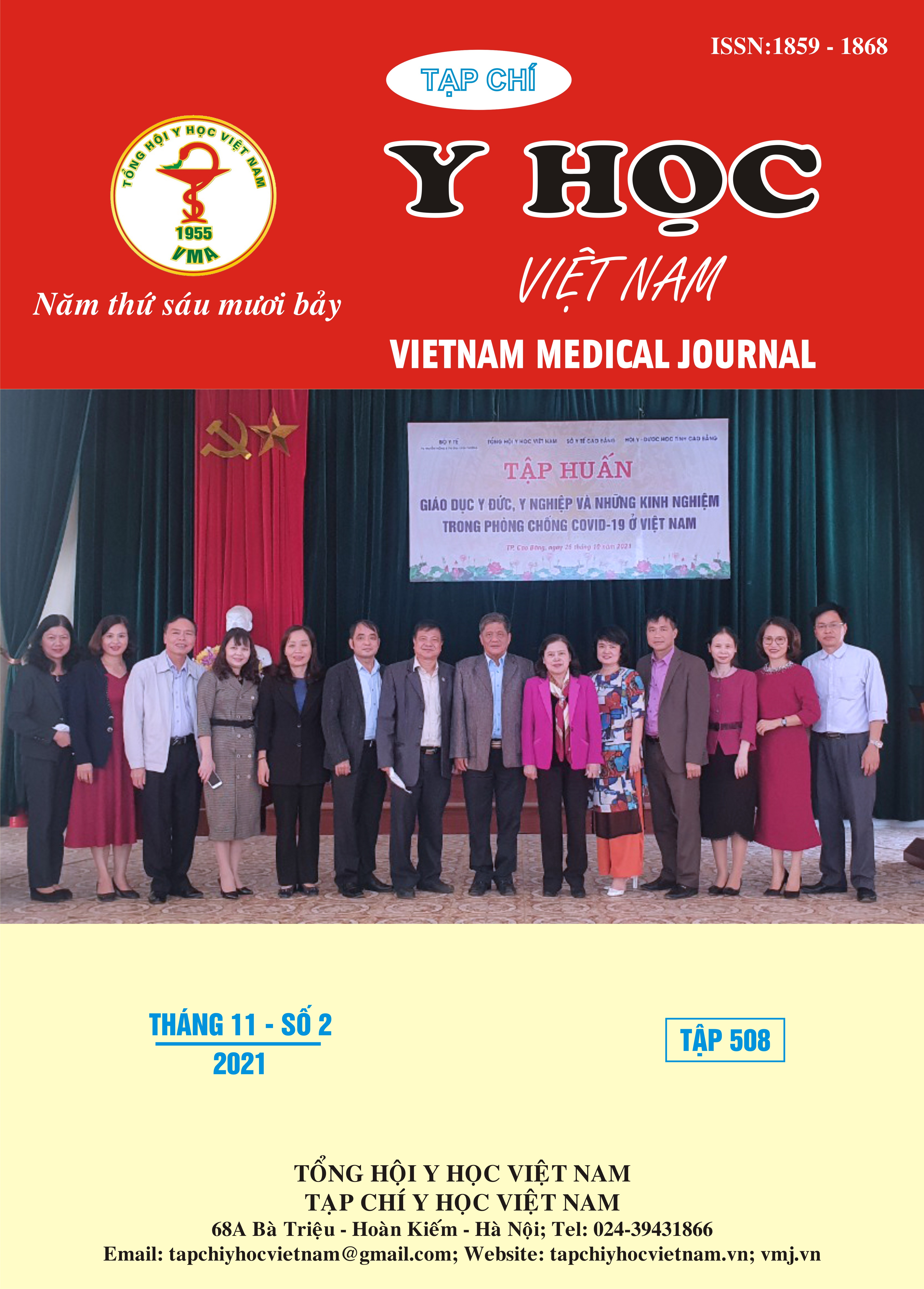DIFFERENTIATION OF TESTICULAR SEMINOMA AND NONSEMINOMATOUS GERM CELL TUMOR ON MAGNETIC RESONANCE IMAGING
Main Article Content
Abstract
Objective: To explore the utility of magnetic resonance imaging (MRI) for the differential diagnostic of testicular seminoma and nonseminomatous germ cell tumors (NSGCTs). Methods: descriptive cross-sectional study design. The medical records from 52 patients (including 24 seminomas and 28 NSGCTs) that were examinated preoperatively with MRI and treated with urologic surgery at Binh Dan hospital between 01/01/2019 and 31/12/2020 were retrospectively reviewed. Results: Seminomas were more likely to have signal homogeneity (79,17%), isointensity on T1-weighted imaging (T1WI) (95,83%), hypointensity on T2-weighted imaging (T2WI) (79,17%), and had wide obviously enhanced fibrovascular septa (83,33%) without hemorrhagic (95,83%) or cystic degeneration (79,17%). Conversely, NSGCT was more likely to have a signal heterogeneity (92,86%), mainly mixed signal on T1WI (60,71%) and T2WI (89,29%), most of them had no fibrovascular septa (85,71%), and hemorrhagic or cystic degeneration was common in malignant NSGCT (60,71% and 78,57%, respectively). MRI showed that there were significant differences in signal homogeneity, T1WI signal intensity, T2WI signal intensity, fibrovascular septa, hemorrhagic or cystic degeneration between seminomas and NSGCTs (p=0,0001). The sensitivity, specificity, positive predictive value, negative predictive value of MRI in differential diagnosing seminomas and NSGCTs were 95,83%; 89,29%; 88,46% and 96,15%, respectively. Conclusion: This study suggest that preoperative MRI can distinguish seminoma from NSGCT with high accuracy. We propose that preoperative MRI of the scrotum is an affective technique that should be widely adopted for the management of scrotal disease.
Article Details
Keywords
MRI, seminoma, NSGCT, testicular tumors
References
2. Clarke N.W., Haran Á.M. (2019) "The management of testis cancer". Surgery (Oxford), 37 (9), 513-523.
3. Deshar A., Gyanendra K., Lopsang Z. (2019) "MRI in the characterization of seminomatous and nonseminomatous germ cell tumors of the testis". International Journal of Science Inventions Today, 8 (2), 411-419.
4. Kim S.H., Cho J.Y. (2016) Oncologic imaging: urology, Springer, 169-197.
5. Lebastchi A.H., Watson M.J., Russell C.M., et al. (2018) "Using Imaging to Predict Treatment Response in Genitourinary Malignancies". Eur Urol Focus, 4 (6), 804-817.
6. Liu R., Lei Z., Li A., et al. (2019) "Differentiation of testicular seminoma and nonseminomatous germ cell tumor on magnetic resonance imaging". Medicine (Baltimore), 98 (45), e17937.
7. Min X., Feng Z., Wang L., et al. (2018) "Characterization of testicular germ cell tumors: Whole-lesion histogram analysis of the apparent diffusion coefficient at 3T". Eur J Radiol, 98, 25-31.
8. Partin A.W., Wein A.J., Kavoussi L.R., et al. (2020) Neoplasms of the Testis. Campbell Walsh Wein Urology. 12 ed. Elsevier Health Sciences,
9. Tsili A.C., Tsampoulas C., Giannakopoulos X., et al. (2007) "MRI in the histologic characterization of testicular neoplasms". AJR Am J Roentgenol, 189 (6), W331-7.


